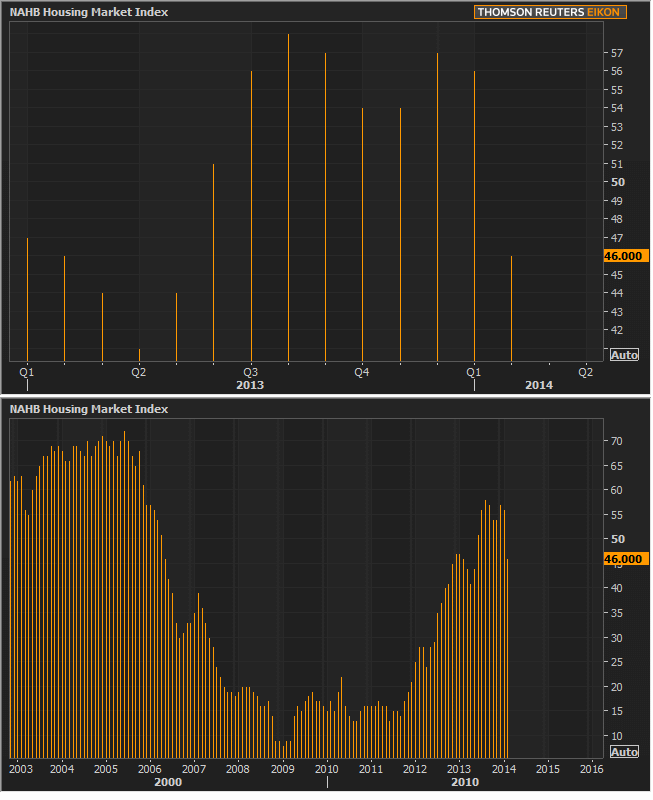The National Association of Homebuilders (NAHB) provided a number of explanations for a record drop in the NAHB/Wells Fargo Housing Market Index (HMI) this month. Unusually severe weather, a dearth of available building lots, and supply chain and labor problems led to a 10 point drop in the composite index which measures builder confidence in the market for newly-built, single-family homes.
The HMI dropped to 46 in the most recent survey of home builder which NAHB has been conducting for 25 years. Builders are asked to gauge their perceptions of current single-family home sales and sales expectations for the next six months as "good," "fair" or "poor," and to rate traffic of prospective buyers as "high to very high," "average" or "low to very low." Scores for each component are then used to calculate a seasonally adjusted index where any number over 50 indicates that more builders view conditions as good than poor.
All three of the major HMI components also declined in February. The component gauging current sales conditions fell 11 points to 51, the component gauging sales expectations in the next six months declined six points to 54 and the component measuring buyer traffic dropped nine points to 31.
"Significant weather conditions across most of the country led to a decline in buyer traffic last month," said NAHB Chairman Kevin Kelly. "Builders also have additional concerns about meeting ongoing and future demand due to a shortage of lots and labor."
"Clearly, constraints on the supply chain for building materials, developed lots and skilled workers are making builders worry," said NAHB Chief Economist David Crowe. "The weather also hurt retail and auto sales and this had a contributing effect on demand for new homes."
Looking at three-month moving averages for regional HMI scores, the West was unchanged at 63 in February while the Midwest registered a one-point decline to 57, the South registered a three-point decline to 53 and the Northeast posted a four-point decline to 38.








